SECTION TWO
A woman and her baby are lying together.

If you were viewing this with your 5-year-old, you could say she was sleeping, dreaming about her husband and son, who appear walking in the valley mist above her. The ground under her is the color of red ochre, which could be iron oxide found in the earth here, or it could be a stripe on her blanket, but it is also her blood, because she and her baby are dead, her village is destroyed, and she is going to join the rest of her tribe in the spirit world.
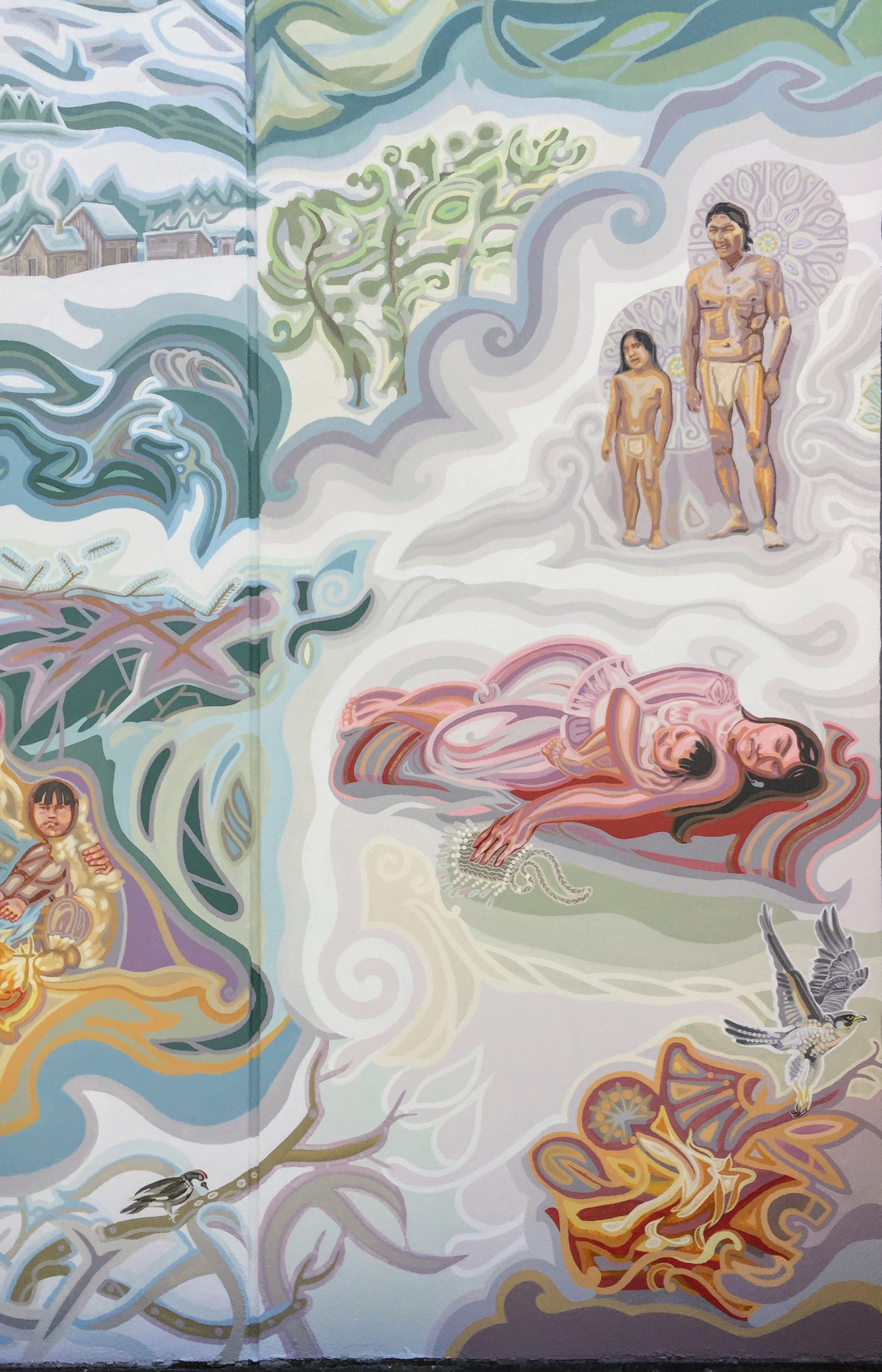
In her darkest hour, she holds fast to her most precious things, her baby and the wedding bag gifted by her husband who made it. Her necklace is a love amulet identical to the one worn by her husband above her.
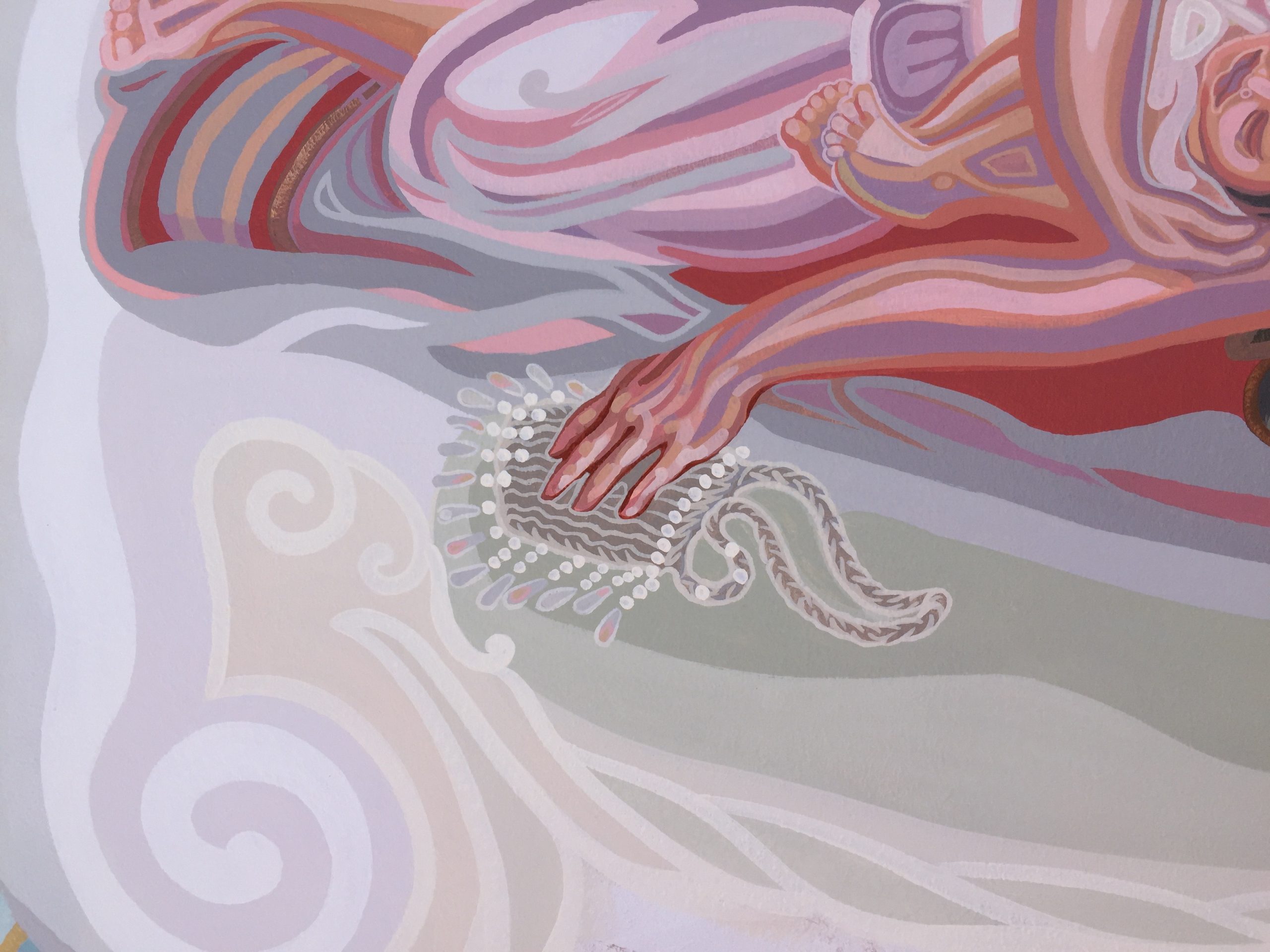
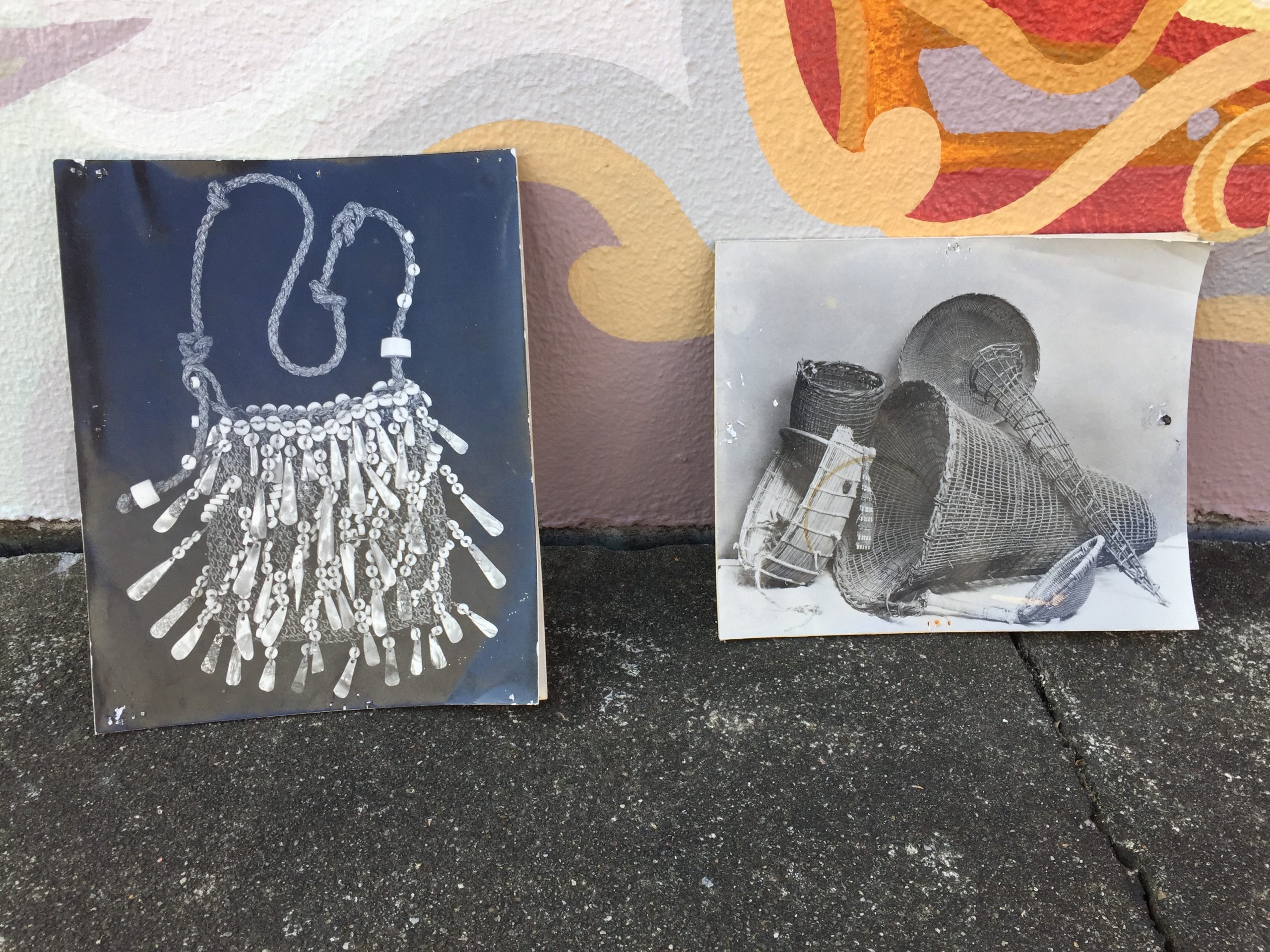
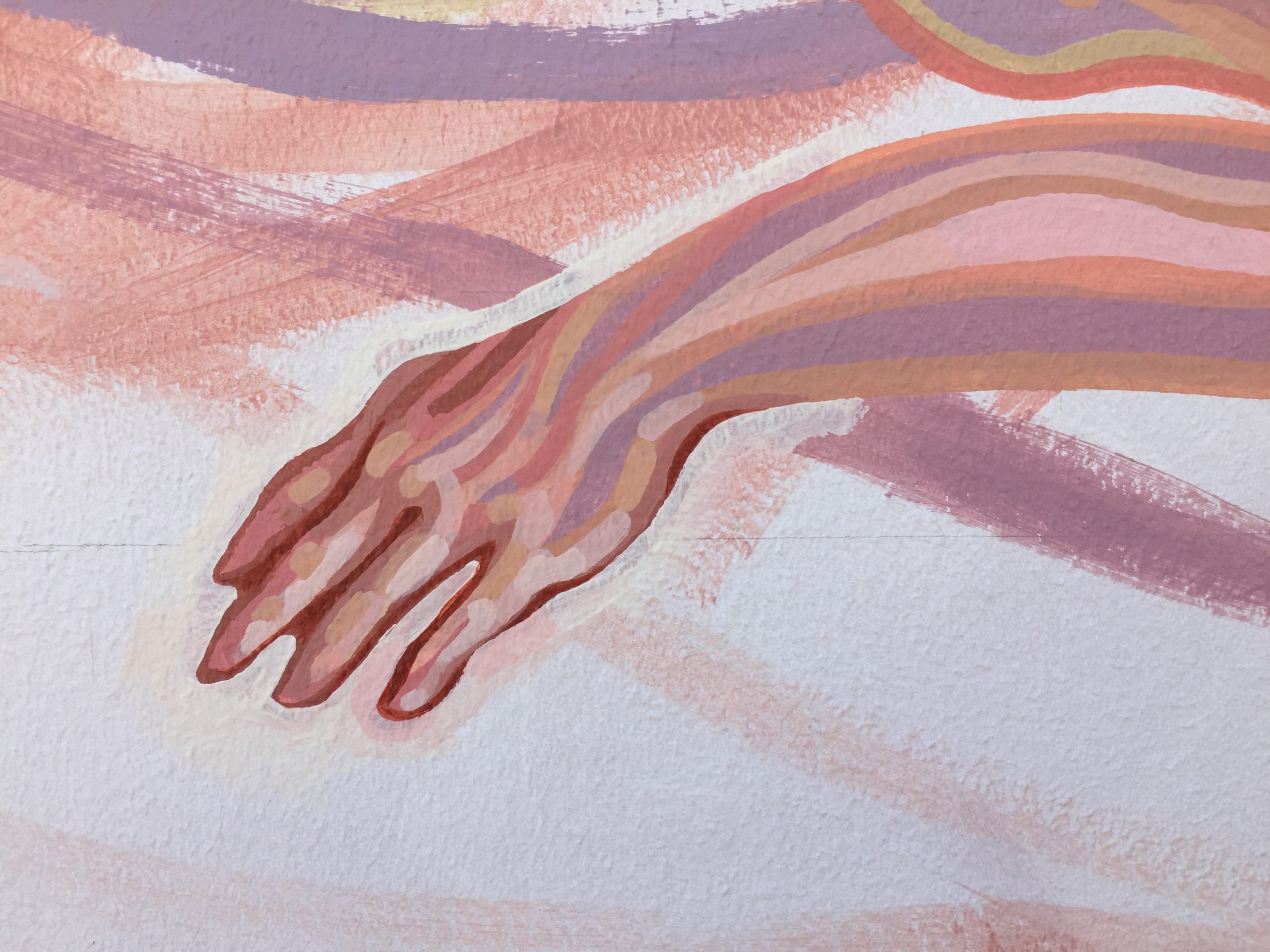
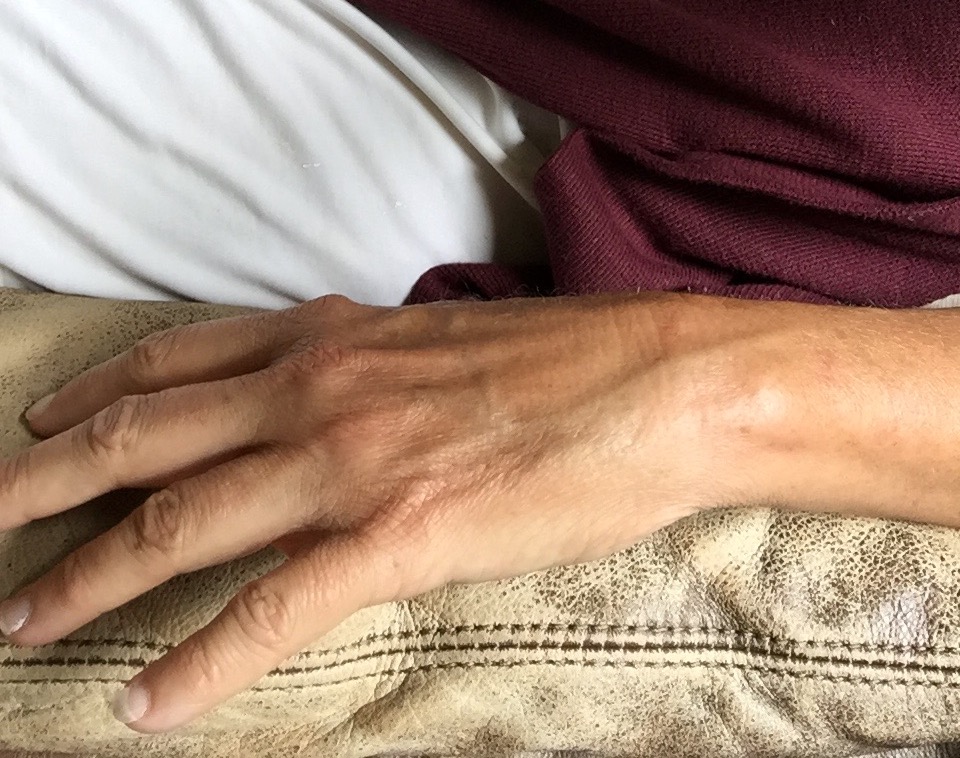
The fire below represents both the normal and the horrific. When Pomo people celebrated their dead, they made funerary fires to burn the person’s belongings, like the baskets in the photo above, so they could pass with the deceased. But here the fire is also destruction. When settlers, militia and army battalions attacked Native settlements, they intentionally burned their shelters and food stores to prevent survival.

But the red-tailed hawk represents exactly that, survival, a culture rising from the ashes in a universally understood symbol. Many individuals perished but the People live on.
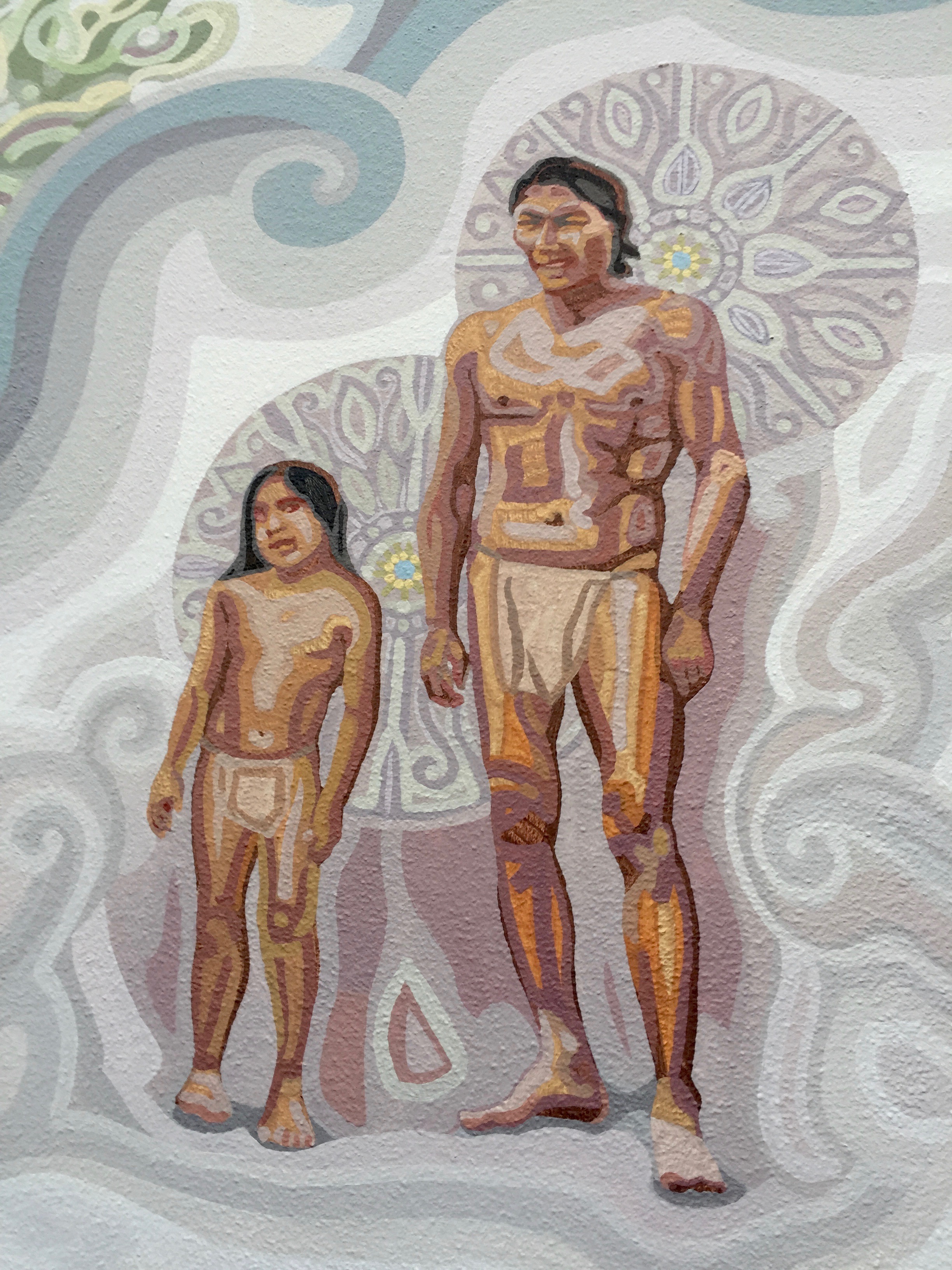
Truth
The word for this panel is “truth.”
Without truth you can’t have honor; without acknowledgement, there can never be healing.
This is just one part of the big, vibrant mural, but it’s an essential part, and I worked hard to present it in terms of the courage, strength and dignity of the Native people, rather than the depravity of the actions against them. I ask each of you reading this to imagine that these things had befallen your family and your people. Perhaps they have. My intention is for truth to take us to honor and to that bright future we envision.
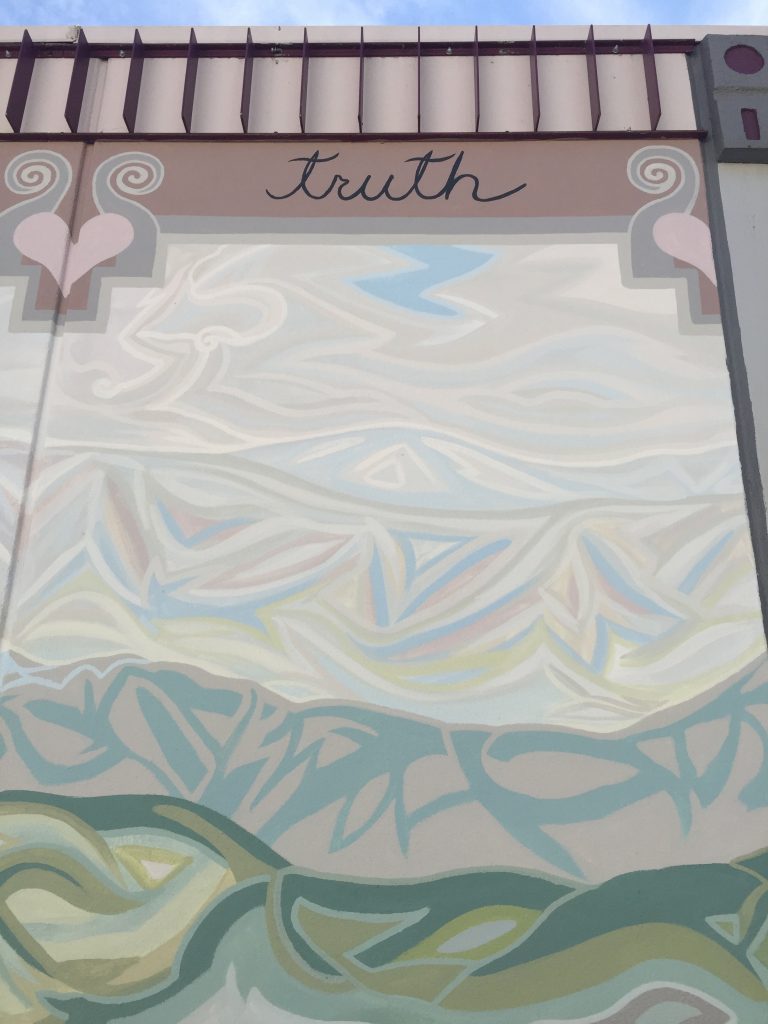
Thank you for looking at these pictures and thinking about this…
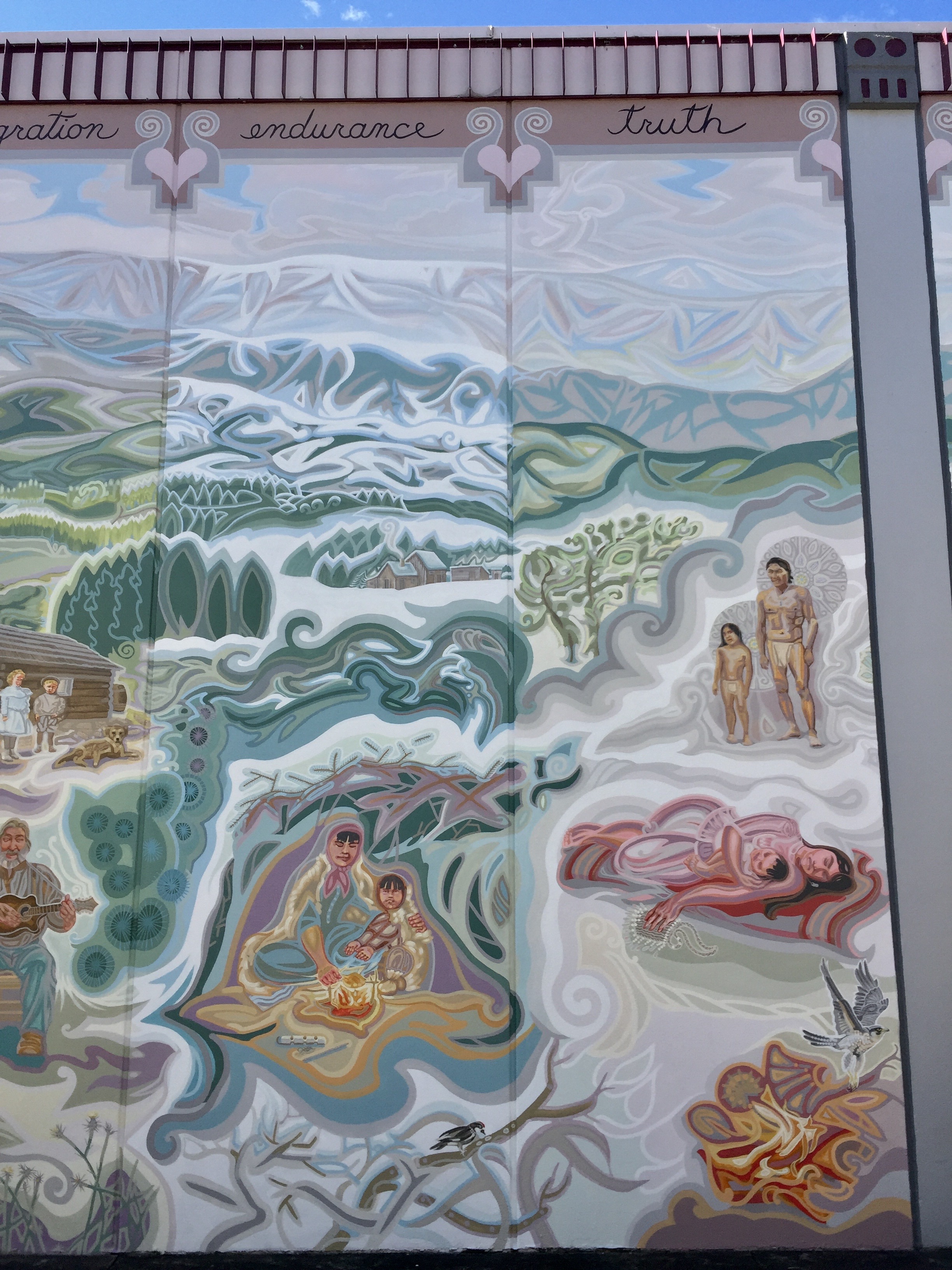
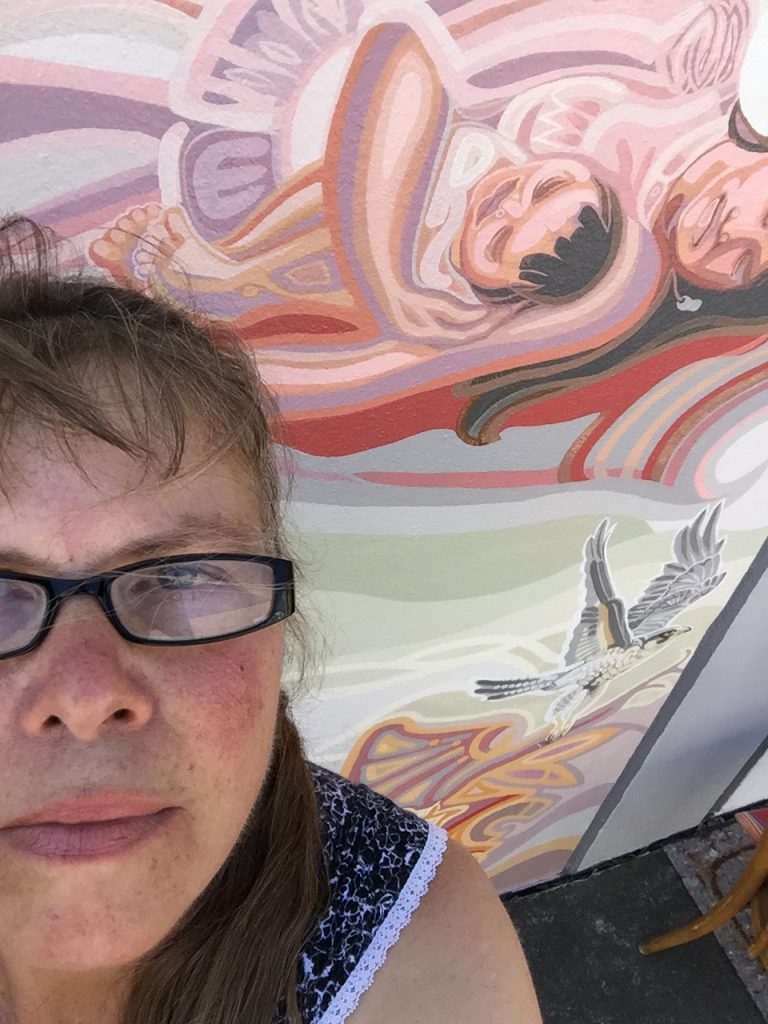
Academics, Native descendants and others have expressed that the state and the federal government should acknowledge the genocide that took place in California. The full story is best told in books, while the emotion of it may perhaps be processed through drama, music and ceremony. This all goes well beyond the scope of my project, but “Decency demands that even long after the deaths of the victims, we preserve the truth of what befell them, so that their memory can be honored…”*
And so we can “get to the mountaintop” together, with love.
Lauren Sinnott
*Quote from Benjamin Madley, assistant professor of history at UCLA and the author of An American Genocide: The United States and the California Indian Catastrophe, 1846-1873. In the Los Angeles Times, May 22, 2016.
Next panel, which starts the next section: